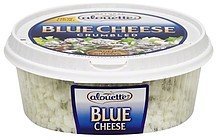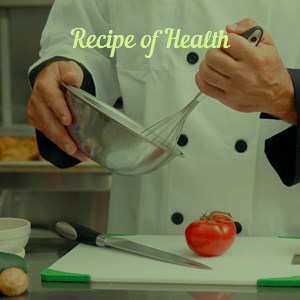Product pictures
| Amount Per 0.25 cup, 28 g | |||
| Calories | 100 Kcal (419 kJ) | ||
| Calories from fat | 72 Kcal | ||
| % Daily Value* | |||
| Total Fat | 8g | 12% | |
|---|---|---|---|
| Saturated Fat | 5g | 25% | |
| Cholesterol | 25mg | 8% | |
| Sodium | 260mg | 11% | |
| Protein | 7g | 14% | |
| Vitamin A | 0.2mg | 6% | |
| Calcium | 150mg | 15% | |
* Percent Daily Values are based on a 2000 calorie diet. Your daily values may be higher or lower depending on your calorie needs.
Find out how many calories should you eat.
Ingredients And Nutrition Overview
Best
choice Good
choice Poor
choice Avoid
it!
choice Good
choice Poor
choice Avoid
it!
-
WeightWatchers Points: 2.7, PointsPlus: 3, SmartPoints: 4
WeightWatchers Points are estimated by carbohydrates, fats, protein and fiber in product. They are not an affirmation of better quality or nutritional value of the product or its manufacturer. Only way to count for dieters. Less points are better.
Read more at Weight watchers diet review -
Over 25% of daily saturated fat!
Bad! More 25% of daily saturated fat!
For years Saturated fat was claimed to raise cholesterol levels and give us heart attacks. Today different studies refute this claim. They say, that replacing saturated fat with carbohydrates or refined starch or sugar is not changing the heart disease risk. Not processed carbs nor saturated fats are good for you. Only if you replace it with polyunsaturated fat, you'll get a reduction in heart disease risk. So try to have a balanced diet. -
Salty! Has over 11% of the daily sodium max
The average American consumes 5,000 mg of sodium daily — twice the recommended amount amount of 2400mg for healthy adults, this is 1 teaspoon of salt.
For medical reasons many people should not exceed 1500mg of sodium.
Surprisingly, you're responsible for only 15% of the sodium in your diet the bigger part - 75% of the sodium that you consume each day comes from processed foods, not home cooking or the salt shaker.
Excess sodium intake increases the risk of high blood pressure, hypernatremia, hypertension, cardiovascular disease and other heart problems.
Are these reasons enough to cut the sodium intake? No doubt! -
Convert Salt tsps to Sodium mg easily
Salt (NaCl) is not excactly sodium (Na).
It is not right to use these terms as synonyms.
The FDA recommended limit of sodium is 2,300 mg per day (or even less - about 1500 mg while one is on low sodium diets).
This is much less than the weight of salt.
(5,750 mg per day or 3,750 mg for low sodium diet) and not so convenient to calculate.
Know how much sodium is in your salt - without a calculator:
1/4 tsp salt = 600 mg sodium
1/2 tsp salt = 1200 mg sodium
3/4 tsp salt = 1800 mg sodium
1 tsp salt = 2300 mg sodium -
A naturally good source of Calcium
You get real, natural easy absorbing Calcium from this product, not as an artificial fortified ingredient.
This is great! Let's try to get the best from the real food, because we get too much from artificial ingredients nowdays. -
For dieters: FoodPoints value is 3
* FoodPoints are calculated by Fooducate based on fats, carbs, fiber, and protein. They are not an endorsement or approval of the product or its manufacturer. The fewer points - the better.
-
Cheese lovers rejoice, maybe?
Denmark is known for its tasty dairy products. Unfortunately butter and cheese are very high in saturated fat. The connection between saturated fats and increased blood cholesterol (leading to heart issues) has been accepted by most health organizations world wide. That’s why, when research comes out pointing out the opposite, our ears perk. Especially when the research is by Danish scientists, sponsored by the Danish dairy industry. What did the European scientists discover? That cheese and butter have different effects on our bloods LDL (bad) cholesterol levels. While adding butter to your diet does increase bad cholesterol levels, cheese does not. A group of 50 people were tested over a period of several months, some consuming butter, others cheese. The butter eaters had an increase of 7% in their LDL cholesterol levels. Why would cheese, rich in saturated fat just like butter, have no effect? The researchers hypothesize that it could be the high level of calcium in cheese, as compared to butter. Or maybe the high amount of protein. Or maybe they need to do some more research. In any case, this is one small study, so don’t go triple cheese on your next pizza night. Rather, enjoy high quality cheese in small portions.
Allergens
Lactose Allergy, Milk Allergy
You Might Also Like
% RDI of Main Nutrition Facts
5%
of RDI* (100 calories) 28 g
-
Cal: 5 %
-
Fat: 12.3 %
-
Carb: 0 %
-
Prot: 14 %
-
0%25%75%RDI norm*
Calories Breakdown
- Fat (72%)
- Protein (28%)
Get Your Recipe of Health!
Follow RecipeOfHealth on Facebook!





















Add your comment